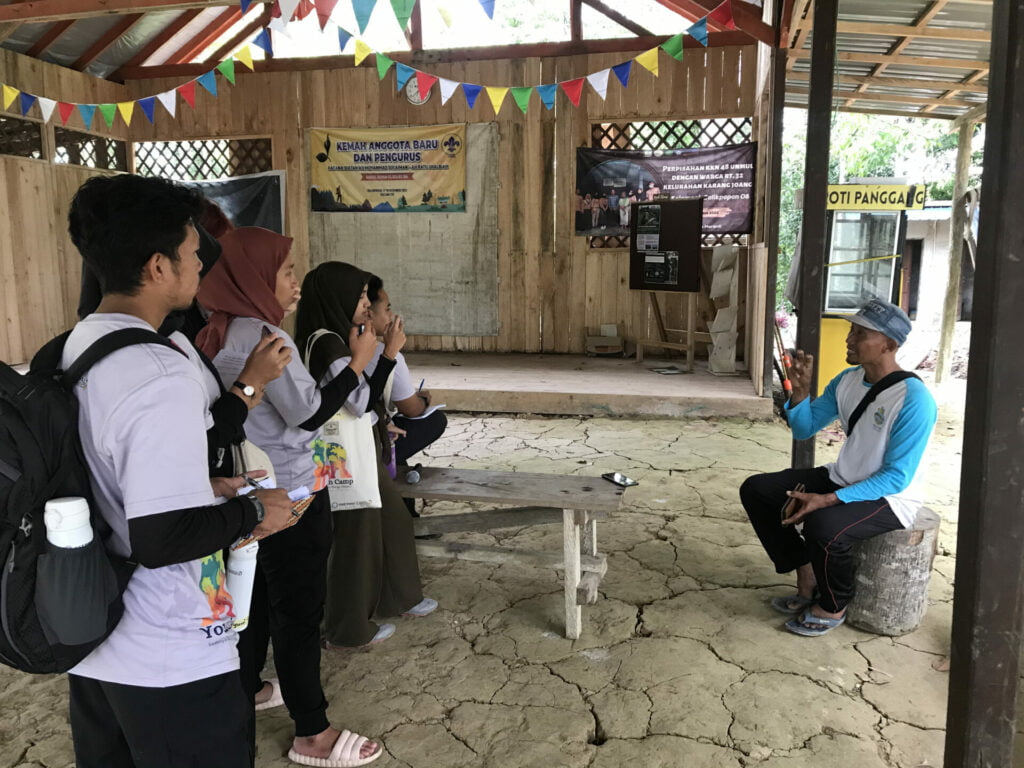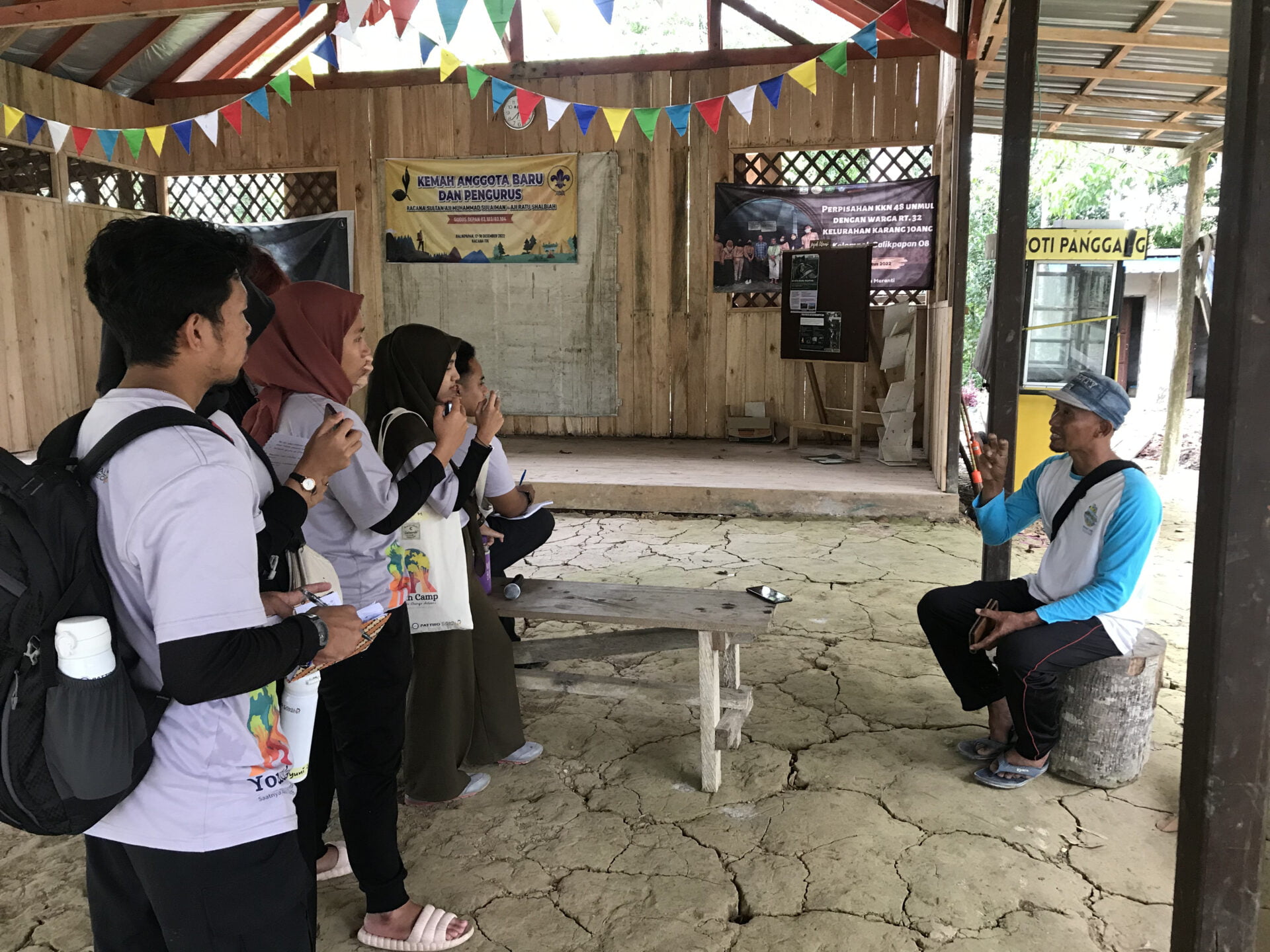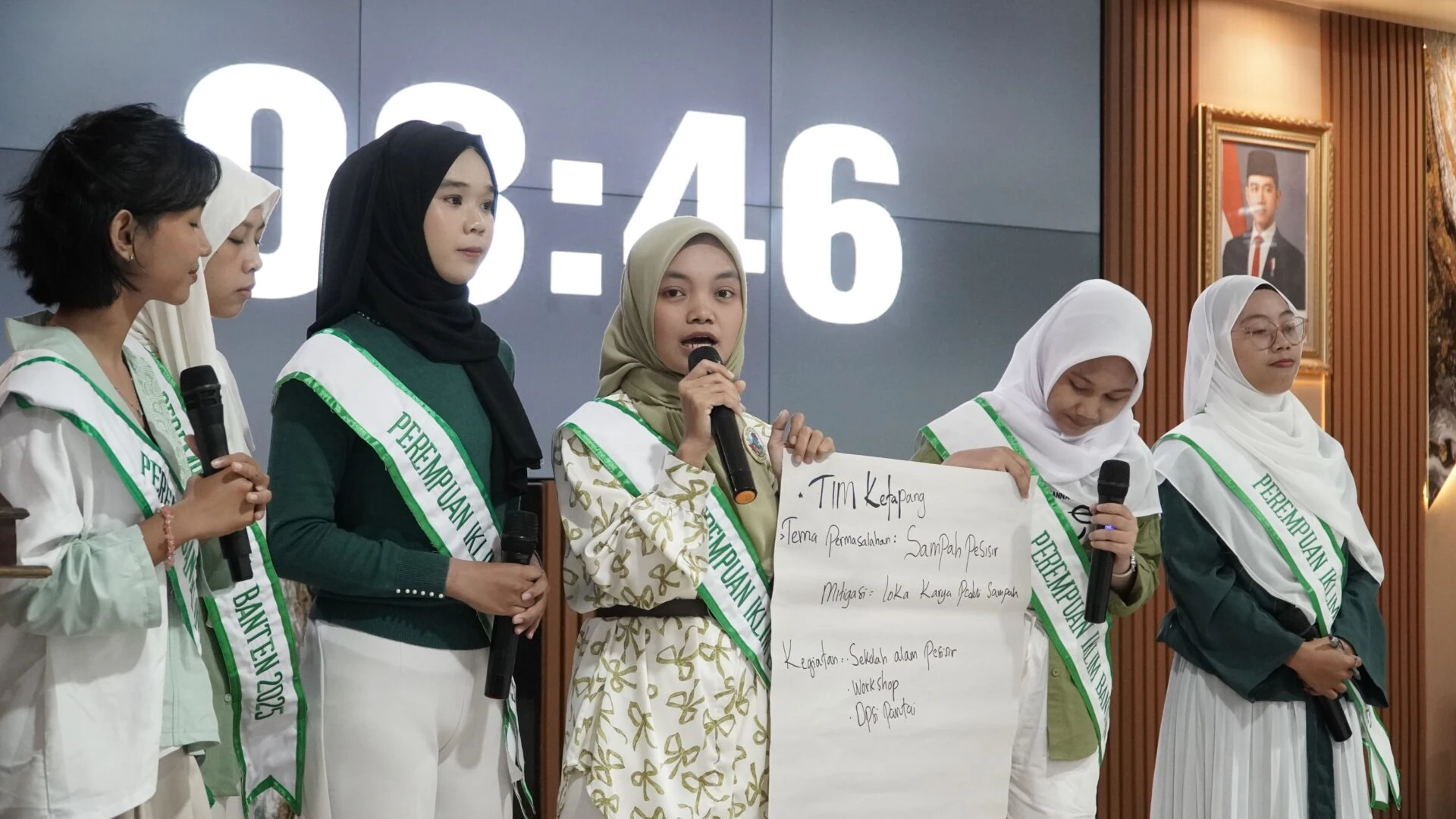
Climate changes affected youth live as they were constrained a damaged earth and uninhabitable environment. Thus, it is important to provide awareness towards climate changes to youth so they can fight for restore the environment which they will inherit. Some of the efforts that can be taken are involving youth in citizen journalism and environmental collaborative actions.
Youth has a close relation to technological advances. It is because they adapt to the latest technologies easily to keep up with the times. The role of youth is needed to actively campaign for climate change issues in their surroundings. This was raised in the remarks delivered by Faisal, Forestry Extension Officer, at the Youth Camp for Climate Changes Actions organized by PATTIRO, in collaboration with Kawal Borneo Community Foundation (KBCF), with the support of the International Development Research Center (IDRC) and the OAK Foundation on 31 January-3 February 2023 in Balikpapan, East Kalimantan.
The utilization of technological advances in voicing aspirations related to climate change issues makes it easier for these aspirations to be conveyed to the government. Environmental cases which uploaded and went viral on social media have a more devastating impact than conventional demonstrations. “We admit that we respond to many things because they have gone viral. Environmental cases that are extraordinarily viral are cases that we prioritize handling,” said Sarkowi V. Zahry, Secretary of Commission III DPRD East Kalimantan.
The utilization of social media as a field of conveying aspirations needs to be improved by citizen journalism skills so the issue of climate change contents can be packaged better and have a stronger message. Surya Aditya, journalist at Kaltimkece.ID revealed that citizen journalism is carried out by focusing on the dissemination of information related to issues of public interest. “The content created must have public appeal,” he said. Surya also added that as a non-professional journalist, it is important for citizen journalism practitioners to pay attention to the journalistic code of ethics so that they do not fall into problems that can be brought to justice.
In realizing the climate justice, citizen journalism can be a tool for nurturing a healthy democracy as well. The implementation of a healthy democracy through freedom of the press can be a tool to ensure the safety of the earth. The younger generation can also play a role in this field through discussions that bring together awareness regarding government policies and budgets related to climate change adaptation. “Youth can start collaborating to protect the climate by advocating data and facts through social media,” said Arief Nurdiansyah, KEMITRAAN staff.
Apart from being through the medium of citizen journalism, climate resilience actions can also be realized by the youth through collaborative actions. Youth can arrange organizations and build connections in initiating climate resilience actions. Organizing a community of youth who care about climate resilience action also needs to be accommodated by the local government.
The youth who are members of nature lover groups and care about the environment have an opportunity to collaborate with regional apparatus organizations in utilizing local government incentive funds. Sarkowi said there are many types of incentive utilization schemes, one of which is the Social Forestry (Perhutanan Sosial) scheme. He added that the government could mandate the youth community to facilitate outreach by the youth community to the public regarding regional regulations related to climate change.
The issue of climate change is not merely an ecological crisis, but also a social crisis. Mitigation efforts undertaken must pay attention to climate justice as a framework for the direction of movement in collaborative action for climate change adaptation. “The contribution that the younger generation can make is starting to explore themselves, organize, learn from the surrounding environment, and build connections to be involved in protecting the environment,” said Smitha Tanaya Sitanggang, WRI Indonesia Food System Research Assistant.
In implementing the Youth Camp for Climate Changes Actions, participants were also invited to discuss and generate ideas related to climate resilience actions. Some of the proposed climate change actions that have emerged are encouraging the government to improve public facilities, encouraging the use of renewable energy, and improving environmental policies. Meanwhile, the proposed actions for the community include conducting campaigns through environmentally friendly communities related to environmental conservation, holding hearings with local governments regarding environmental issues, planting agroforestry crops, conducting citizen journalism, and creating discussion groups and forums concerned with the environment.





